Notes
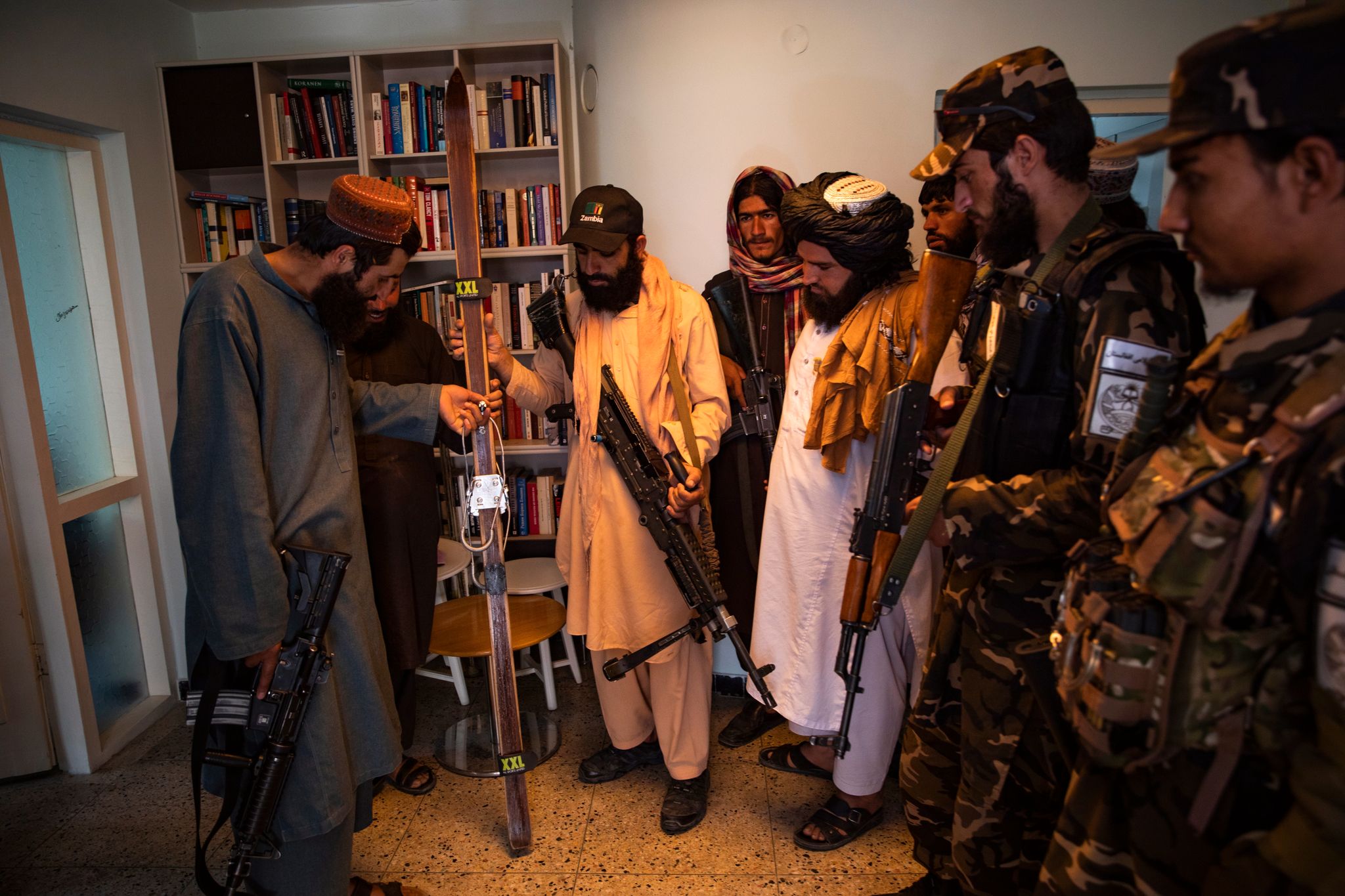
Photo: Afshin Ismaeli
Caption: Taliban soldiers examine wooden skis with Kandahar bindings in the abandoned Norwegian Embassy.
The Taliban, A Pair of Skis, and Seeing What We Think We Know
Seen as wildly provocative on social media, photos of Taliban fighters in the Norwegian Embassy after the fall of Kabul say as much about visual bias.
by Jens E. Kjeldsen
Wazir Akbar Khan is a small, wealthy district of Kabul where large villas remain secured behind tall walls and huge metal gates. Built by affluent Kabulis in the 1960s and 70s, most of these villas are inspired by architecture in the French and Italian Riviera. Over the last two decades many have been occupied by foreign organizations such as the UN, NGOs, and international embassies, all of whom refer to the area as the “Green Zone.”
One villa in the Green Zone housed the Embassy of Norway until it was evacuated on August 14. Norwegian service specialists and other employees removed or destroyed sensitive documents, information technology, and any artifact displaying the Norwegian coat of arms, hoping to prevent misuse by the Taliban. They also flew home with a portrait of Norway’s King Harald V in hand and left behind personal belongings they didn’t have room for or enough time to pack.
The very next day on August 15, Taliban soldiers entered the city and made their way through the abandoned Norwegian Embassy. Taliban soldiers granted permission to the newspaper Aftenposten and photographer Afshin Ismaeli to accompany them and publish a feature story about their visit.
This photograph from the story shows a group of eight Taliban soldiers standing close to each other in front of a bookshelf as they look over an old pair of traditional cross-country skis left by the Norwegians. Each man carries a machine gun or semi-automatic weapon. All are wearing either military clothes or traditional Afghan drapery, though one wears a cap embroidered with the name and flag of Zambia. One man holds up the skis while another inspects outdated bindings that use a wire rope to go around the heel. A curiosity perhaps for the Taliban soldiers, the binding is recognized across Norway as the Kandahar-binding, associated with a traditional ski run named after Frederick Sleigh Roberts, the first Earl of Kandahar.
At first sight the photograph invokes a feeling of a stereotypical representation: wild brutes ransacking and plundering, weird savages mumbling in a strange tongue, inspecting with wonder these marvels of modern equipment from the western world.
The same feeling is echoed as a common interpretation on social media. For example, this tweet by Thomas Heghammer, a senior research fellow at the Norwegian Defence Research Establishment who specializes in Jihadism, describes the image as “A picture for the history books. The Taliban seize and rummage through the Norwegian embassy in Kabul.” Replies to the tweet include weird comments about the Zambia cap, questions about books on the shelves, and speculations about why the Taliban would carry guns around in a deserted embassy. There are explicitly racist references to “cavemen” and “cockroaches.” Does this mean that the picture and the feature-story is a stereotypical representation? Even racist? That would be a quick and easy interpretation.
In my view the image is better understood as a moment of peculiar incongruities and contrasts. Those Norwegian skis are antiquated and have traditional bindings, but it is a set of contemporary straps from a popular sports shop that hold the skis together. And yet the entire contraption seems out of place in the hands of the Taliban. At the same time, their calm, inquisitive attitude seems inconsistent with activities we might otherwise expect of soldiers with guns. In both its mood and subject matter, photos like this one challenge stereotypical representations of wild soldiers rummaging through conquered residences and destroying artifacts of the infidels.
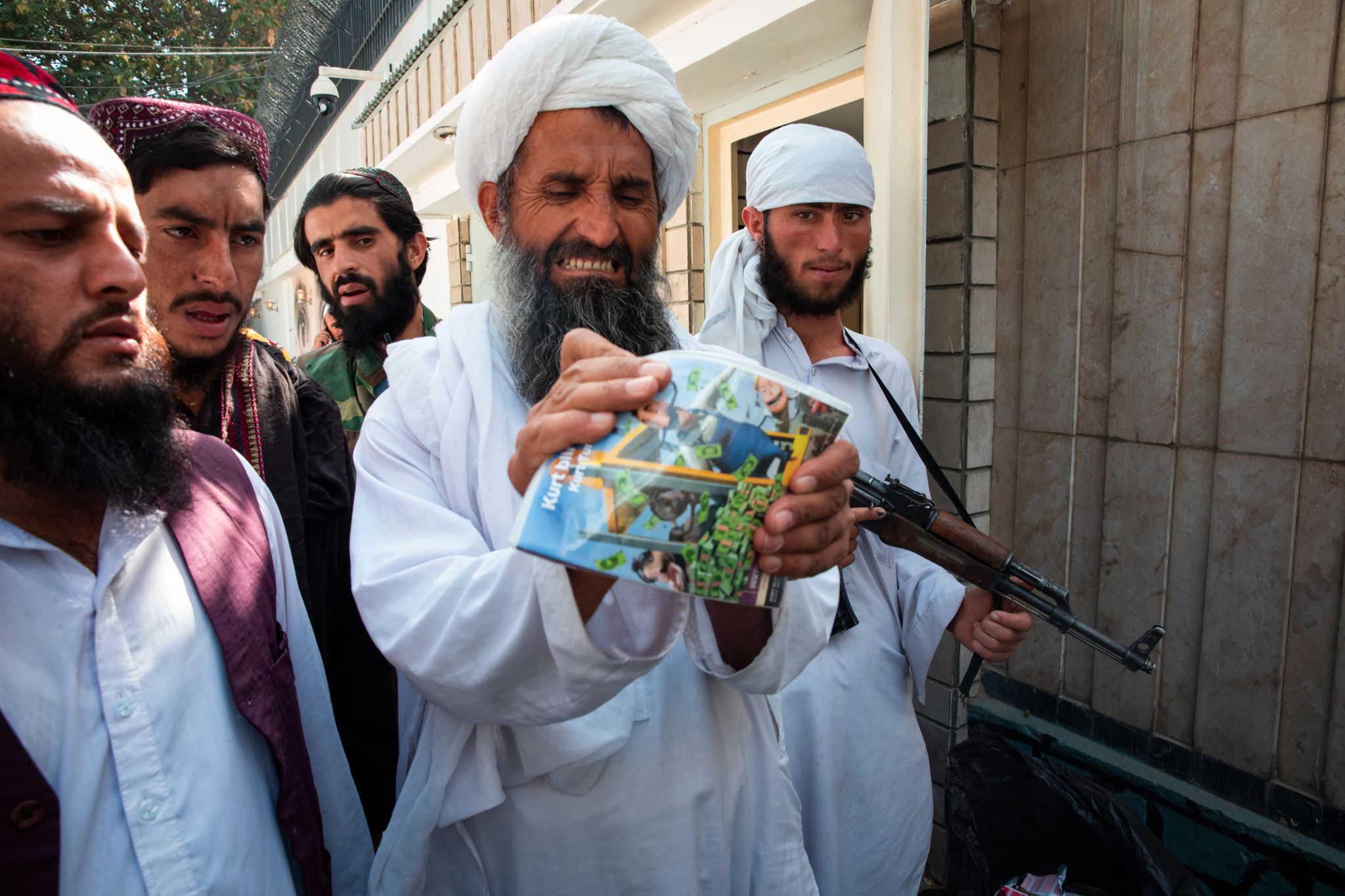
Caption: The Taliban fighter did not like what he found. He tried to crack a DVD with the children's film "Kurt becomes cruel".
Photographs in the story that do show acts of destruction appear more humorous and harmless than dangerous. This photo shows an elder Taliban soldier trying to break a DVD copy of a children’s animated movie. For many of us it is hard to understand how this movie could represent a threat so grave that it needs to be destroyed.
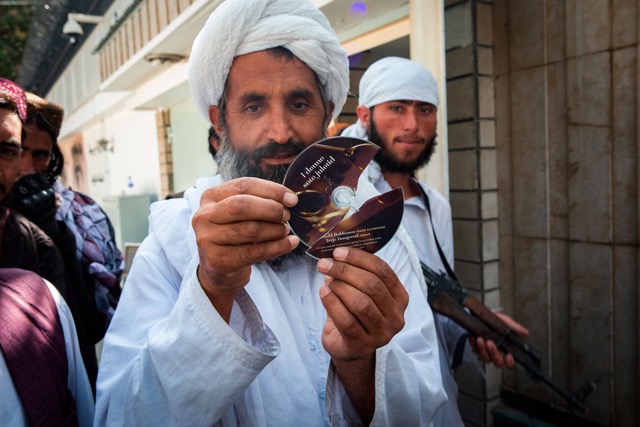
Caption: The Christmas songs on the CD "In this sweet Christmas time" were not appreciated either.
But even while committing this act of iconoclasm, this soldier seems neither threatening nor cruel. Later he is photographed after breaking a CD of Christmas carols, but the picture shows him with a gentle smile.
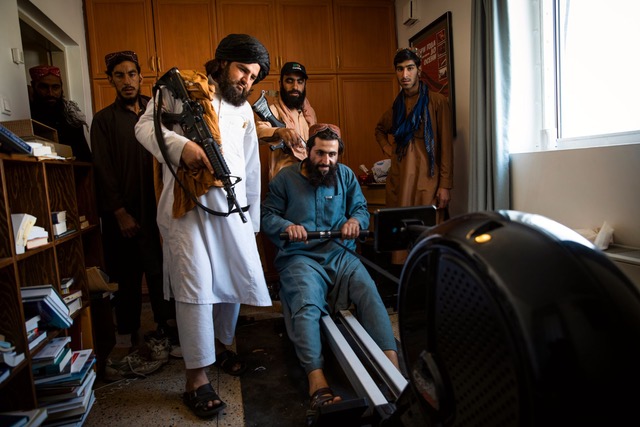
Caption: Taliban chief Amir Mohammed Mohammed tested the ambassador's rowing machine.
If it all seems a little bewildering and out of place, the difficulty is with placing these images into stereotypical frameworks: A Taliban soldier tests a rowing machine left in the embassy, and his comrades watch with interest at his newfound interest in exercise. Two soldiers wearing all white in front of a wall-sized painting that reads, “There Can Be No Peace Without Women.”
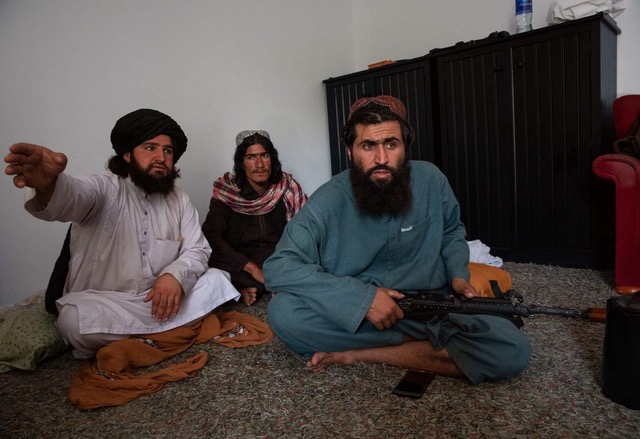
Caption: Taliban chief Amir Mohammed Mohammed (t.h.) would not leave us go without accepting some tea and Afghan bread.
A soldier sits in a red armchair with his machine gun in one hand, a cup of tea in the other, and a gentle smile on his face. We read in the story that he is asking if the Norwegian journalists would like a cup of tea. Another photo shows three Taliban soldiers sitting on the floor, with a caption reporting how the Taliban chief would not let the journalists go without first offering them tea and Afghan bread. The chief has his machine gun in his lap but drinking tea and breaking bread is probably the least violent activity one can think of.
Quick glances invite stereotypical interpretations, positive as well as negative. In that way, pictures on social media are motors of visually motivated reasoning, which is a tendency among all of us to see in ways that confirm what we think we know. However, when one inspects all the pictures in the feature, looks closer, interprets them in context, and reads the accompanying article, it is a story that becomes more difficult, nuanced – even confusing. The skis are not modern equipment; they are old. The behavior of the Taliban is not violent, but apparently calm, gentle and welcoming. They destroy an animated movie and a CD of Christmas carols, but they also invite to tea and promise to take good care of the embassy. “This area still belongs to your country,” Amir Mohammed Mohammed assures the newspaper. “You will have it back. We are just watching it for you.”
Willingly entering such uncertainty and floating interpretative possibilities opens new ways of thinking about friends and foes. However, we will only be able to see this if we are willing and able to suspend our established beliefs. In these fixed-minded times, it’s a considerable ask.
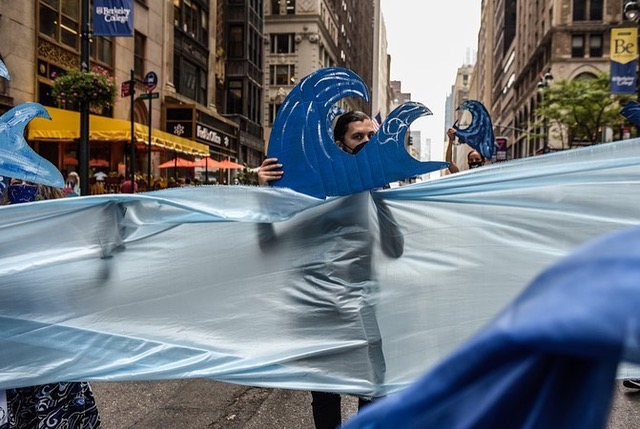

Reactions
Comments Powered by Disqus